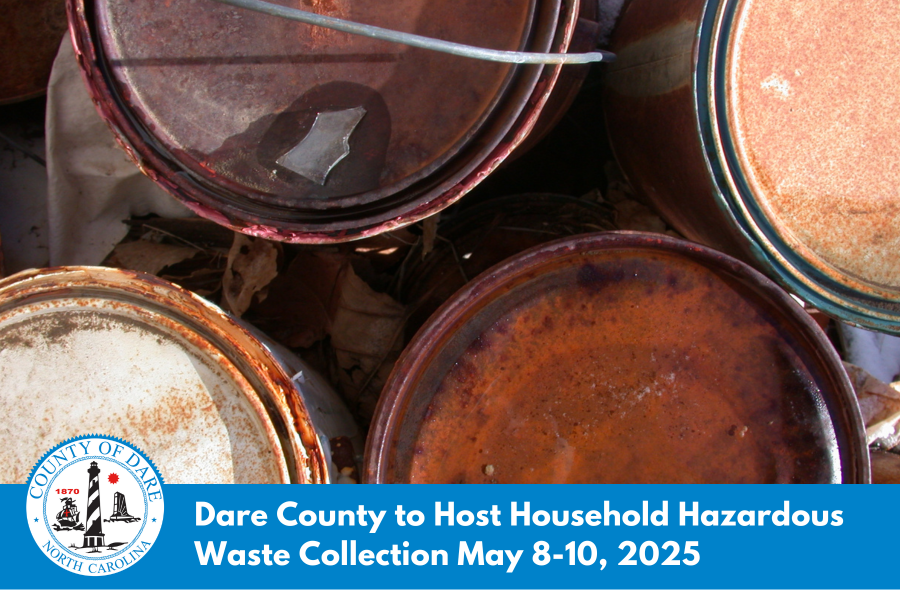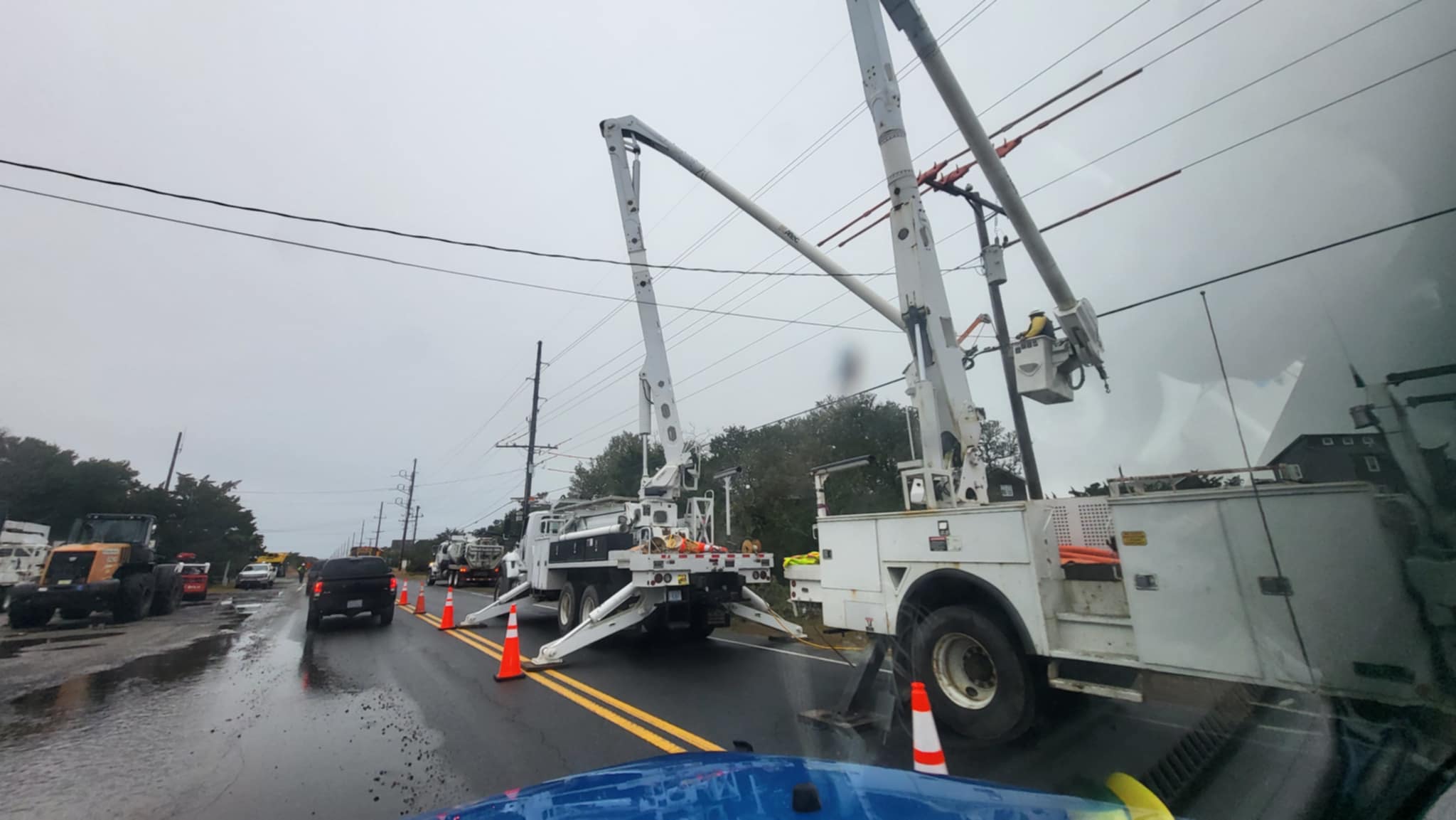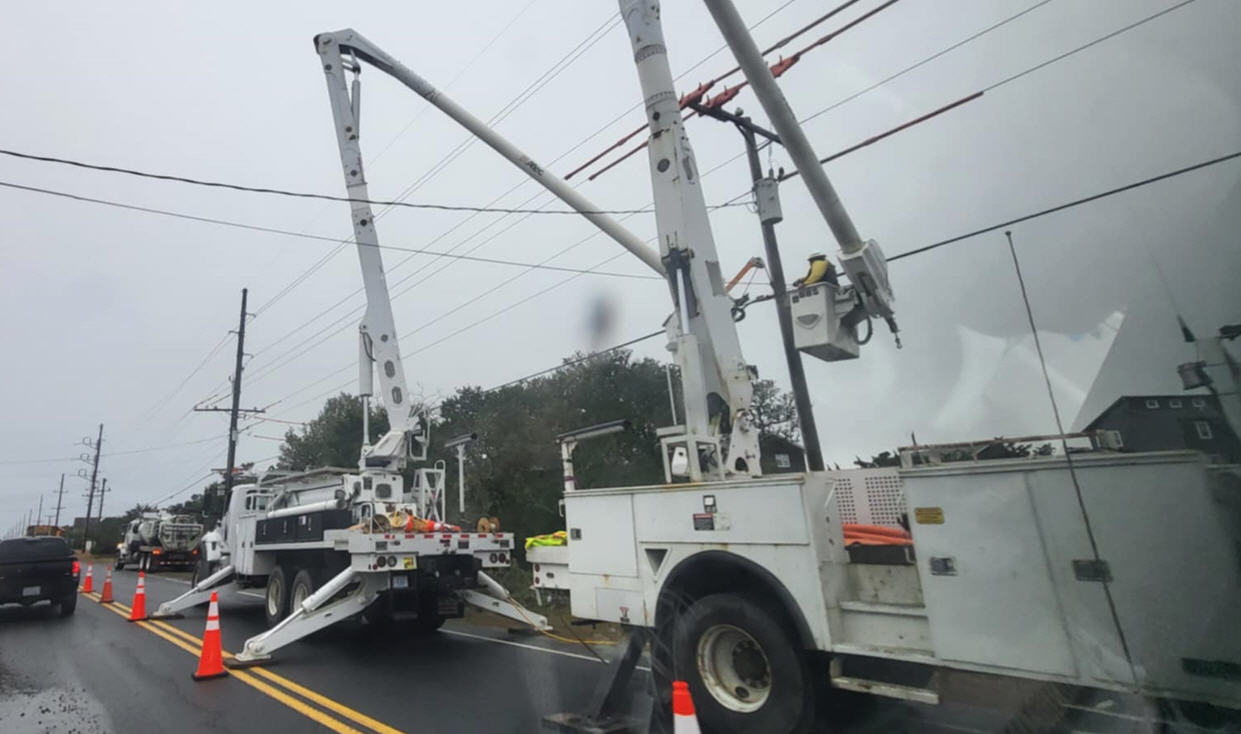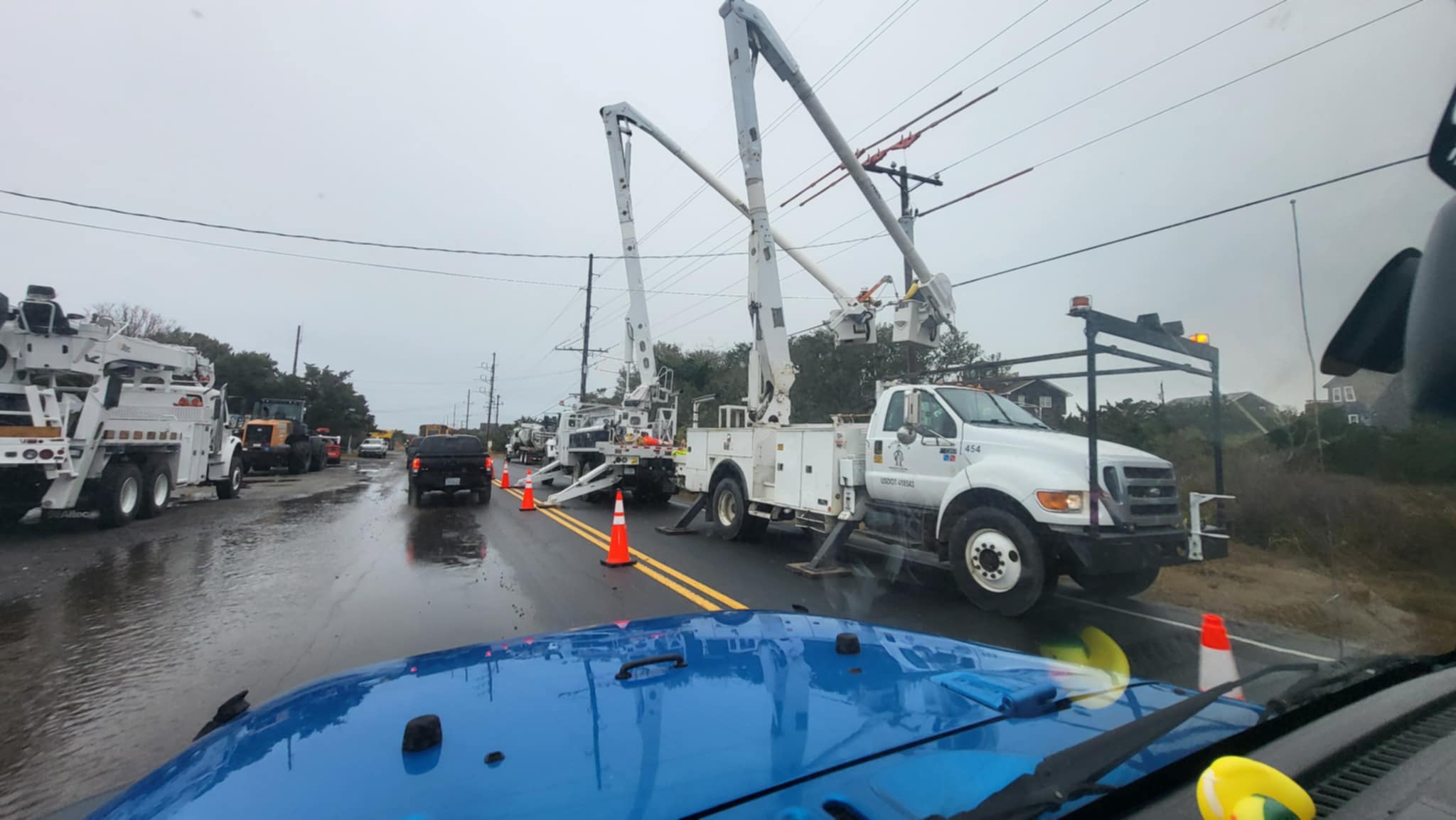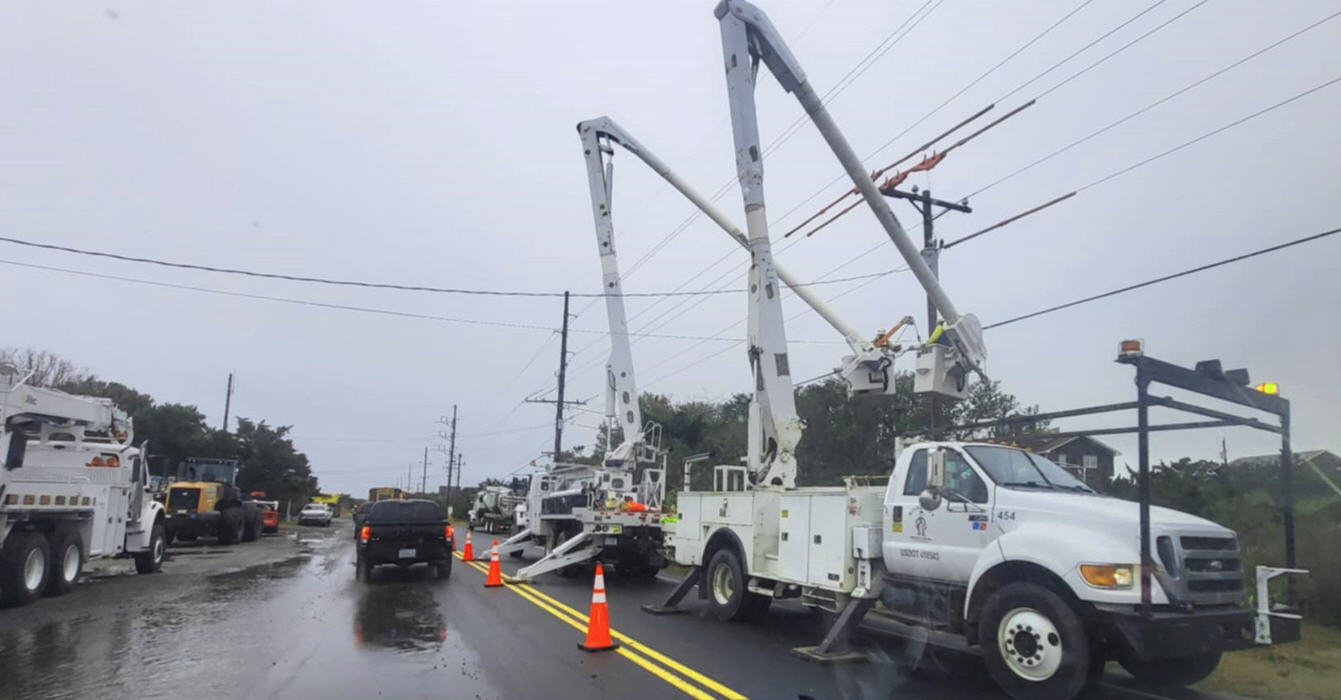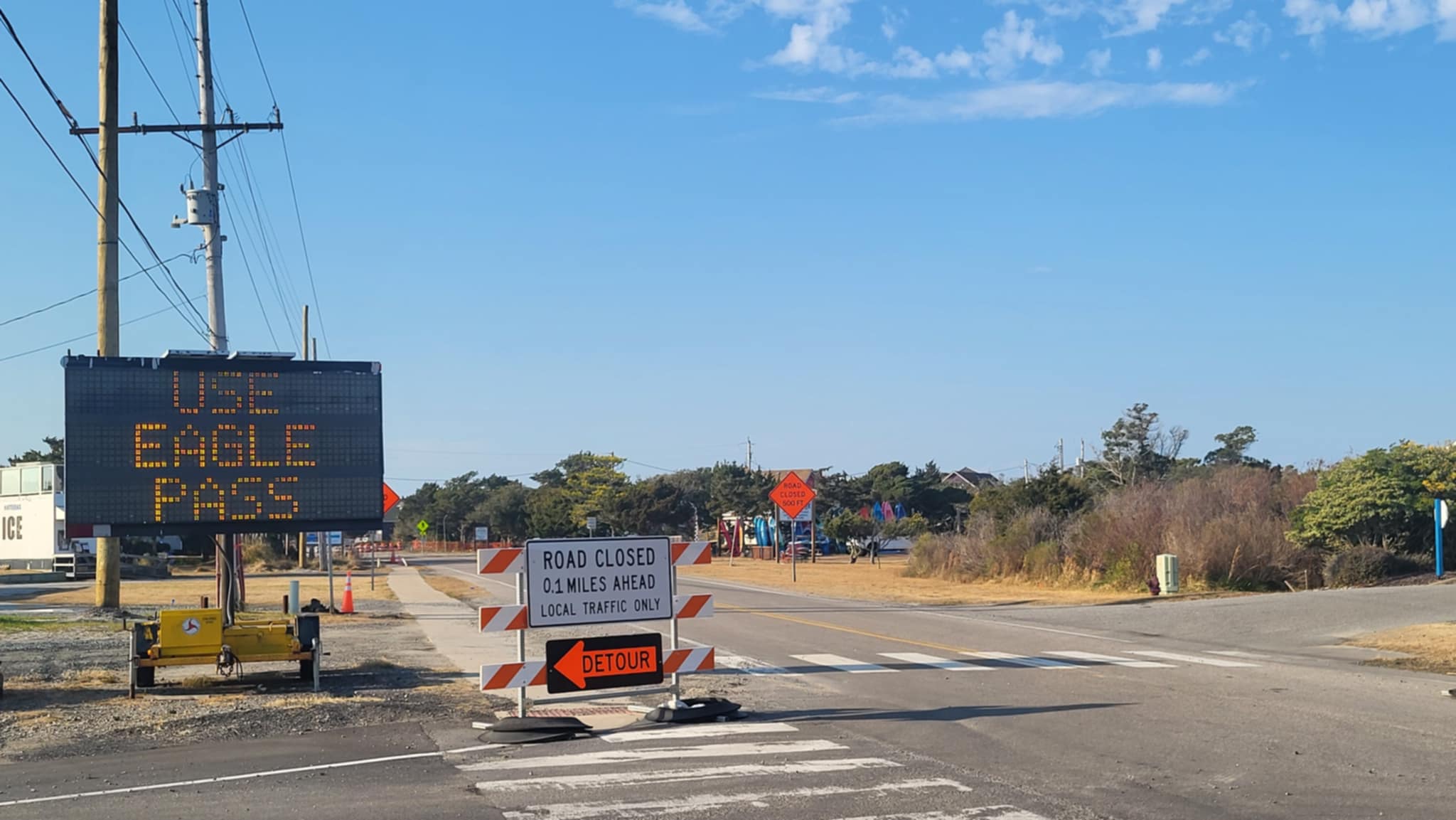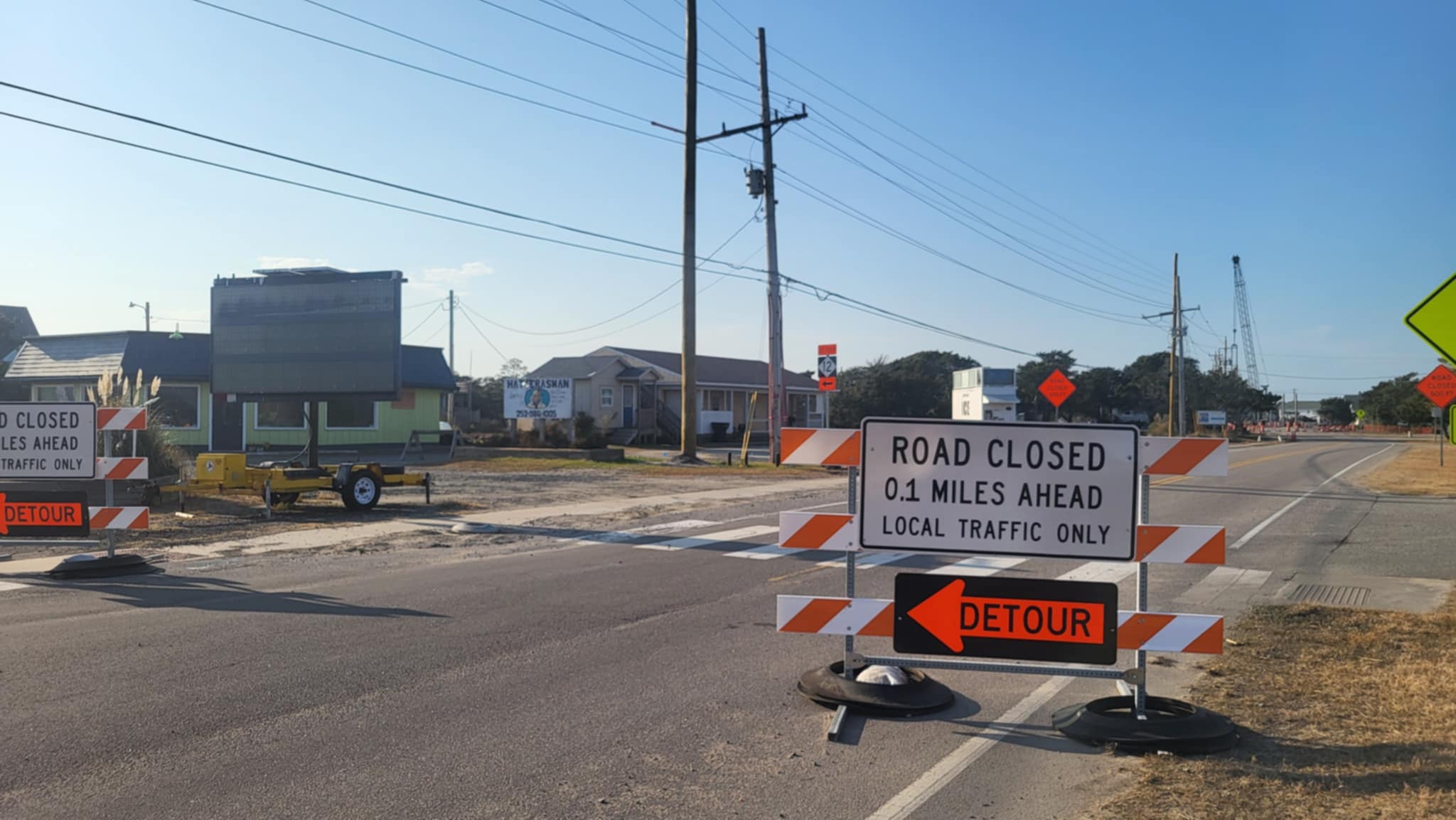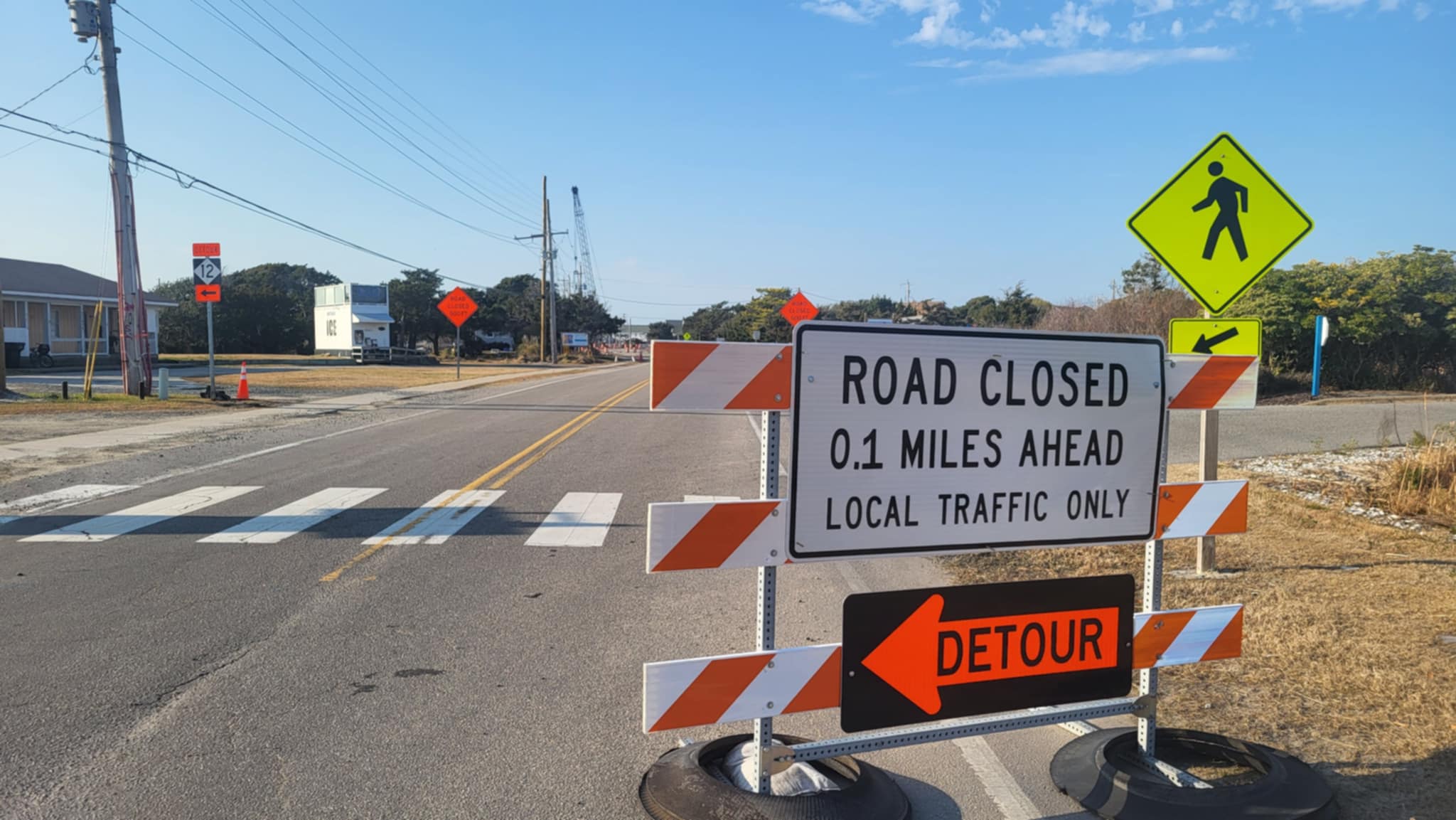16,500 pounds of concrete removed from Buxton Beach as petroleum remediation efforts continue

An ongoing initiative by the U.S. Army Corps of Engineers to excavate and remove petroleum-contaminated soils at the Buxton Beach FUDS Site has resulted in the removal of large sections of left-behind military infrastructure over the past several days.
The infrastructure and debris removal was not strictly intentional, but was necessary for the crew to access patches of petroleum contamination under the shoreline’s surface.
“Contractor Bay West, LLC, the contractor on site for the U.S. Army Corps of Engineers, Savannah District, has removed some remnant infrastructure from the Buxton Formerly Used Defense Sites [FUDS] property, but only if the structures were hindering access to the removal of petroleum-contaminated soil,” said Cheri Pritchard, Media Relations Chief for the Corps’ Savannah District, in an Oct. 10 email to the Island Free Press.
“To date, 16,500 pounds of concrete, [including] concrete footing, the manhole, and rebar, along with approximately 45.5 cubic yards of impacted soil and approximately 210 feet of metal and PVC pipes has been removed,” she added.
The 16,500 pounds of concrete included large slabs of Building 19, (or the Terminal Building), which was used for submarine monitoring activities by the Navy during the height of the Cold War.

The outline of the former Terminal Building frequently appeared over the past 13 months, (particularly when there was significant erosion), and it has been a noticeable public safety hazard since Buxton Beach closed to the public in September 2023.
According to multiple reports, most of the former foundation was no longer visible along the shoreline as of Thursday morning, October 10, after heavy excavation work was conducted in the immediate vicinity of the Terminal Building site.
This relative invisibility could also be due to other factors, however – such as a temporary build-up of sand on the constantly-changing shoreline – and there could certainly be more concrete remaining under the surface.
The contractor’s excavations began on October 2, and the full petroleum remediation project is expected to take around 60 days, according to an October 9 press release from the Corps.
During the project, “the [contractor] will excavate and containerize any petroleum-impacted soil they encounter, transporting and disposing of the material at an off-site waste management facility,” stated the Corps.
This ongoing response represents the largest petroleum remediation efforts to date, since two offshore hurricanes caused severe erosion, revealing the abandoned infrastructure and petroleum smells from Buxton’s former Navy/U.S. Coast Guard base.
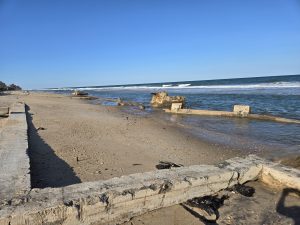
As part of the Formerly Used Defense Site (FUDS) program, the Corps is responsible for addressing the petroleum contaminants related to Navy activity from 1956-1982, while the Coast Guard is responsible for other potential contaminants from their use of the site from roughly 1985-2010.
Unfortunately, there is not yet an agency that will take the reins when it comes to fully and completely removing the left-behind concrete, pipes, and other debris.
“When Congress created the FUDS Program in 1986, building demolition and debris removal work was limited to ‘unsafe’ buildings and structures in such a state when transferred out of DOD control,” states the Corps on its Buxton FUDS property website.
“When the Navy ceased control of the Buxton Naval Facility in 1982, buildings and structures were safe, and the vast majority of the facility was subsequently and beneficially used by the U.S. Coast Guard. Current unsafe conditions are a result of the remnant Navy infrastructure being exposed by erosion on the beach. These conditions did not exist when the property was transferred from Navy control in 1982. For these reasons, USACE does not have the authority under the FUDS Program to address these conditions. This question has been considered and evaluated by USACE’s highest organizational levels.”
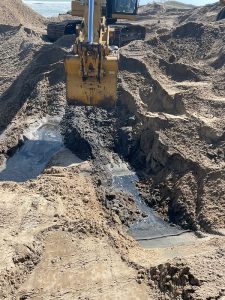
On October 1, the Buxton Civic Association (BCA) and its recently retained legal counsel, Perkins Coie LLP, sent a letter to the decision-makers at the Corps outlining their concerns related to the removal of all infrastructure, (which can be viewed here.)
The letter references the historic agreements signed with the National Park Service when the two military branches used the site, which stated that the property would be left in pristine National Seashore condition.
“We ask that you use your authority to ensure that the remediation and restoration work at Cape Hatteras extends beyond removal of contaminated sand to include removal of all infrastructure left behind by the Navy and Coast Guard,” reads the letter.
“No private or non-federal government parties are responsible. There can be no question that it is a federal responsibility to ‘clean up and restore the site.’ And there is no question that the Navy and Coast Guard committed, on behalf of the federal government, to get the clean-up and restoration done.”
BCA board members have repeatedly stated they will continue to push for full remediation of the site until the beach is clear of debris, and can safely reopen to the public.
And while the Corps’ current scope of work is only concentrated on removing petroleum and not debris, the recent removal of pipes, concrete, and sections of now-infamous eyesores like the Terminal Building is a promising development.
“We are thrilled to see the physical infrastructure being removed. To us, the problem has always been multi-faceted,” said BCA board member Heather Jennette. “The petroleum concerns were paramount, certainly, but the idea that the physical hazards would be left unaccounted for was unacceptable. We kind of always held on to the hope that they would be forced to remove them to fully remove the petroleum, and it seems like that is the case. It is really encouraging to see those piles of rubble removed.”












